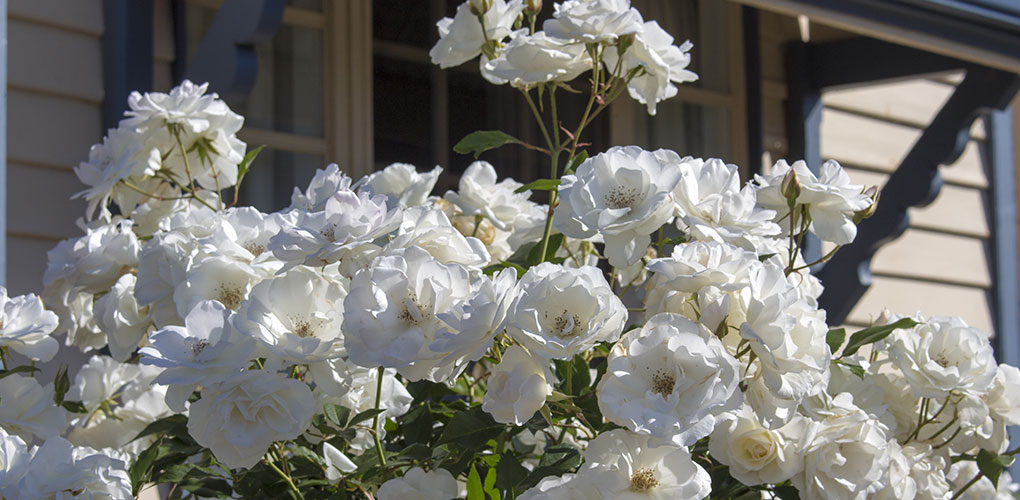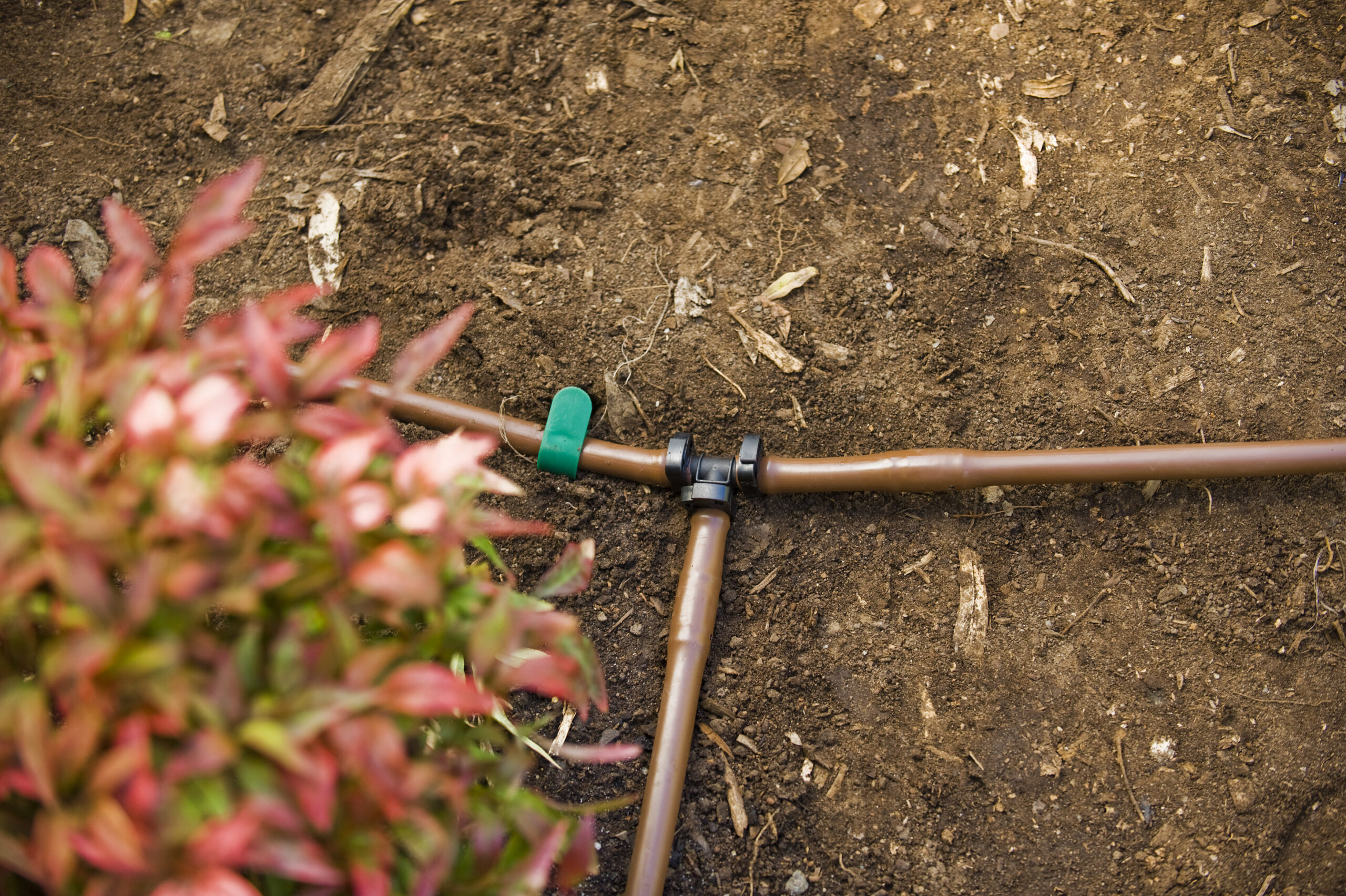Having a lavish garden all year round is what a green thumb’s dreams are made of, but we know having a healthy backyard doesn’t just happen on its own. There’s plenty of tasks that go into keeping a garden looking fresh, green and spectacular, and pruning your trees and shrubs is one of them! We discover exactly how to and when to prune roses, as well as maintaining and pruning various fruit trees so your tidy, thriving backyard can be the envy of your neighbours.
When to prune your roses
Roses are still such a popular flower to grow in your backyard, not only do they look beautiful but they give off a nostalgic scent that makes your garden smell sweet. People are drawn to traditional roses because they are quite a robust plant, lasting decades when taken care of on a regular basis. While their thorns may be prickly, pruning your rose bushes help maintain their stamina and reduce the risk of disease to the plant.
During the summer, they love a nice trim which removes spent flowers and diseased leaves, while in the winter, particularly July or August in Australia, the major rose pruning needs to be done. I know, you’ve probably heard the saying “Prune in June” if you’re a fellow Aussie, but in actual fact, you need to prune after the frosty days are gone. Frost over freshly pruned stems can actually stop the rose bush from growing, so if you live in warmer parts of Australia you can probably prune in July, whereas colder parts of Australia should wait until August when it’s starting to get a bit warmer. So why do you need to prune rose bushes? Well, apart from keeping them under control, these lovely bushes are at risk of fungal diseases such as blackspot and rust on leaves, so pruning to an open shape can help air circulate the plant better. If you have landscape, heritage or ground cover roses, you may already know they are less demanding – a nice trim and tidy will give them the space they need.

How to prune roses like a pro

Step 1
Prune to remove stems that cross each other and try to open up the rose bush to let air circulate through.

Step 2
Reduce the stems by removing between a third to a half of them; we know it seems like a lot of stems lost, but they will flower well because of it.

Step 3
Remove stems that have any damage, even those that are old and thin.

Step 4
Cut to an outward flowering bud, this helps new stems grow to not cross over in the centre. Make it a habit by cutting at a 45 degree slope away from the bud as this allows moisture to evaporate and not settle where the bud is going to form.

Step 5
Dispose of your trimmings and leaves into your green bin and not your compost heap, as most home composting systems don’t get hot enough to destroy fungal spores on rose bushes.

Step 6
Fertilise about 3 weeks after pruning as this prepares your rose bush for its spring growth!
Tips for pruning fruit trees
When you break it down, rose pruning is fairly simple and goes in the same way as pruning fruit trees, as the purpose is to keep your fruit tree branches open. This allows them to not cross over each other, helps reduce the overall height of your fruit which becomes easy to pick, while also reducing the number of fruits your tree yields, offering larger and tastier fruit. What’s becoming highly discussed and sworn by in the gardening community is to remove the strongest branch from your fruit tree in order to totally renew the tree in about six to 10 years, but only reducing the branches to around five buds on smaller stems.
Knowing how to prune your fruit trees
If you’re into stone fruit trees, the best time to prune them is after your harvest, with a minor trim and shape in the early summer if it really needs it. It’s important to understand that each fruit tree has different needs and requires a slightly different way of pruning, which mainly depends on your area’s climate. We have created a simple guide on how to prune fruit trees, and over time you’ll get to know your own trees and what works well for them in your environment.
Fruit trees are a wonderful addition to any garden, especially pear and apple fruit trees which flower on the spurs and also on the tip of the one year old laterals, creating a lovely aura for your backyard. When you have the right tools, pruning your fruit tree will be a piece of cake; having sharp secateurs, loppers for thick branches and a small pruning saw for major branch removal handy will be your key to efficient and effective pruning. Don’t forget to take care of your tools by cleaning with methylated spirits after you’re done to reduce spreading disease across your plants and trees!
Roses are still such a popular flower to grow in your backyard, not only do they look beautiful but they give off a nostalgic scent that makes your garden smell sweet. People are drawn to traditional roses because they are quite a robust plant, lasting decades when taken care of on a regular basis. While their thorns may be prickly, pruning your rose bushes help maintain their stamina and reduce the risk of disease to the plant.
During the summer, they love a nice trim which removes spent flowers and diseased leaves, while in the winter, particularly July or August in Australia, the major rose pruning needs to be done. I know, you’ve probably heard the saying “Prune in June” if you’re a fellow Aussie, but in actual fact, you need to prune after the frosty days are gone. Frost over freshly pruned stems can actually stop the rose bush from growing, so if you live in warmer parts of Australia you can probably prune in July, whereas colder parts of Australia should wait until August when it’s starting to get a bit warmer. So why do you need to prune rose bushes? Well, apart from keeping them under control, these lovely bushes are at risk of fungal diseases such as blackspot and rust on leaves, so pruning to an open shape can help air circulate the plant better. If you have landscape, heritage or ground cover roses, you may already know they are less demanding – a nice trim and tidy will give them the space they need.


Step 1
Prune to remove stems that cross each other and try to open up the rose bush to let air circulate through.

Step 2
Reduce the stems by removing between a third to a half of them; we know it seems like a lot of stems lost, but they will flower well because of it.

Step 3
Remove stems that have any damage, even those that are old and thin.

Step 4
Cut to an outward flowering bud, this helps new stems grow to not cross over in the centre. Make it a habit by cutting at a 45 degree slope away from the bud as this allows moisture to evaporate and not settle where the bud is going to form.

Step 5
Dispose of your trimmings and leaves into your green bin and not your compost heap, as most home composting systems don’t get hot enough to destroy fungal spores on rose bushes.

Step 6
Fertilise about 3 weeks after pruning as this prepares your rose bush for its spring growth!
Tips for pruning fruit trees
When you break it down, rose pruning is fairly simple and goes in the same way as pruning fruit trees, as the purpose is to keep your fruit tree branches open. This allows them to not cross over each other, helps reduce the overall height of your fruit which becomes easy to pick, while also reducing the number of fruits your tree yields, offering larger and tastier fruit. What’s becoming highly discussed and sworn by in the gardening community is to remove the strongest branch from your fruit tree in order to totally renew the tree in about six to 10 years, but only reducing the branches to around five buds on smaller stems.
Knowing how to prune your fruit trees
If you’re into stone fruit trees, the best time to prune them is after your harvest, with a minor trim and shape in the early summer if it really needs it. It’s important to understand that each fruit tree has different needs and requires a slightly different way of pruning, which mainly depends on your area’s climate. We have created a simple guide on how to prune fruit trees, and over time you’ll get to know your own trees and what works well for them in your environment.
Fruit trees are a wonderful addition to any garden, especially pear and apple fruit trees which flower on the spurs and also on the tip of the one year old laterals, creating a lovely aura for your backyard. When you have the right tools, pruning your fruit tree will be a piece of cake; having sharp secateurs, loppers for thick branches and a small pruning saw for major branch removal handy will be your key to efficient and effective pruning. Don’t forget to take care of your tools by cleaning with methylated spirits after you’re done to reduce spreading disease across your plants and trees!
When you break it down, rose pruning is fairly simple and goes in the same way as pruning fruit trees, as the purpose is to keep your fruit tree branches open. This allows them to not cross over each other, helps reduce the overall height of your fruit which becomes easy to pick, while also reducing the number of fruits your tree yields, offering larger and tastier fruit. What’s becoming highly discussed and sworn by in the gardening community is to remove the strongest branch from your fruit tree in order to totally renew the tree in about six to 10 years, but only reducing the branches to around five buds on smaller stems.
If you’re into stone fruit trees, the best time to prune them is after your harvest, with a minor trim and shape in the early summer if it really needs it. It’s important to understand that each fruit tree has different needs and requires a slightly different way of pruning, which mainly depends on your area’s climate. We have created a simple guide on how to prune fruit trees, and over time you’ll get to know your own trees and what works well for them in your environment.
Fruit trees are a wonderful addition to any garden, especially pear and apple fruit trees which flower on the spurs and also on the tip of the one year old laterals, creating a lovely aura for your backyard. When you have the right tools, pruning your fruit tree will be a piece of cake; having sharp secateurs, loppers for thick branches and a small pruning saw for major branch removal handy will be your key to efficient and effective pruning. Don’t forget to take care of your tools by cleaning with methylated spirits after you’re done to reduce spreading disease across your plants and trees!














